Description
Genus: Pulchroboletus
- Genus 2: Xerocomus
Species: sclerotiorum
Common Name: “Whitey’s Bolete”, after Dr. Whitey Hitchcock
Tells: Yellow flesh bruises blue or blue/green & tastes acidic. Stem is red high & yellow lower w/red-brown dots & spots; has creases going up & down; & may be netted at the top.
Other Information: Stem skin bruises dark blue before fading to brown. Stem flesh is brighter yellow than the cap flesh w/reddish brown bug holes. Red cap skin ages pink to tan, & slowly bruises blackish blue. Bright yellow pores age duller, & bruise blue before fading to brown. Likes moss under oaks & other deciduous trees.
Edibility: Unknown.
CHEMICAL TESTS:
- NH4OH (Ammonia): Yellow on cap skin; yellow on yellow flesh.
- KOH: Everything turns orange; cap skin, flesh, stem skin, etc.
- FeSO4 (Iron Salts): No reaction on cap; no reaction or darkens on flesh.
Links:
 |
0 |  |
0 |  |
0 |  |
430 |


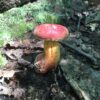

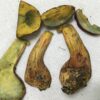

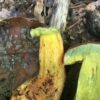

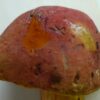
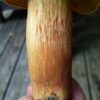
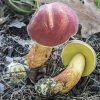
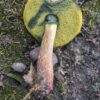
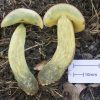
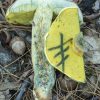
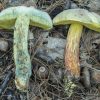

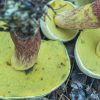
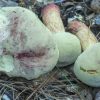
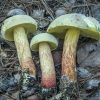
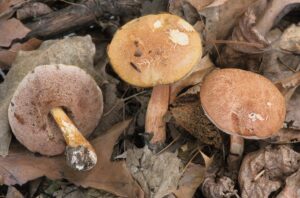
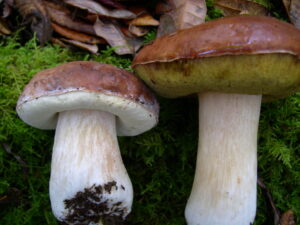
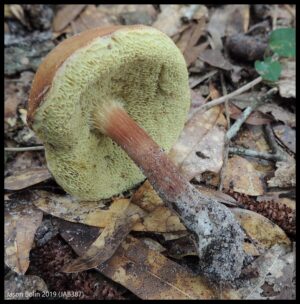

Got something to discuss?
It seems to me that the apex of the stalk of this bolete can sometimes have red netting. This trait caused me a lot of confusion when I was trying to run specimens which I’m fairly sure were this through the filter.